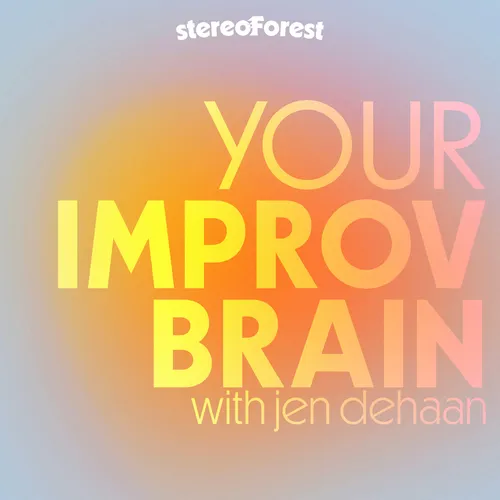How Bottom Up Thinking can Affect Dealing with Plots in Improv
- Author
- Jen deHaan
- Published
- Mon 27 Nov 2023
- Episode Link
- https://jens-discount-improv-emporium.biz/IUStage/episodes/episode-3-bottom-up-thinking-plots-in-improv
Bottom-up thinking or bottom-up processing is common way for autistics to process information. It’s wired into our brains and affects EVERYTHING. How does this type of thinking affect doing improv scenes, especially when it comes to plots? In particular… when you weren’t expecting a plot, and suddenly things get plotty?
Bottom-up thinking affects how we follow sets, pull in information, process, and make decisions. So if we’re trying to follow plotlines but are focused on the details before the big plot picture… what happens now?
I talk about these things in this episode.
NICHE TOPICS! GRANULAR TOPICS! I GOT ‘EM!
Also I think I sound rather Canadian-accent in this episode! Nailed it, even, maybe?
Downloadable content
Download the Free Post-Show Reflection Guide: Sent to your inbox when you subscribe to either newsletter (and added to the footer to each message if you're already subscribed).
Get a booklet with six exercises to help you get reps in challenging scenes called "Exercises to Ruin You"
More resources
- Get articles about improv: Join the ImprovUpdate newsletter(s) for general improv articles, and articles about neuroinclusive improv and comedy. Join either or both!
- Get downloads about improv & comedy: Find them here.
- Review the podcast: Rate and review this podcast on Podchaser.
- Chat about improv and comedy: Join the Improv Update Discord here.
Support
Like this content and want it to continue? Support this podcast here with a one-time tip here: StereoForest.com/tips
About
This podcast was created, written, and is hosted by Jen deHaan. You can find her bio here.
This episode was and edited and produced by StereoForest.com. Contact StereoForest for information about producing YOUR podcast, website, and more at reasonable rates.
Join the FREE StereoForest newsletter for all podcast and show updates at members.stereoforest.com.
What does neuroinclusive mean? It means that you create a supportive environment inclusive and accommodating of all cognitive types and abilities to learn, write together, or perform. This, just like the word "neurodiversity", includes both neurodivergent and neurotypical individuals. Which is… you, since that covers everyone!
This podcast was made in British Columbia, Canada by StereoForest Podcasts.
Note
I mention surveys and written versions in earlier episodes. I am moving this content to ImprovUpdate.com on a new being-developed website. You can always send me any comments, thoughts, feedback, or contributions using the contact form on this page.
This podcast uses the following third-party services for analysis:
Podcorn - https://podcorn.com/privacy
Podtrac - https://analytics.podtrac.com/privacy-policy-gdrp
